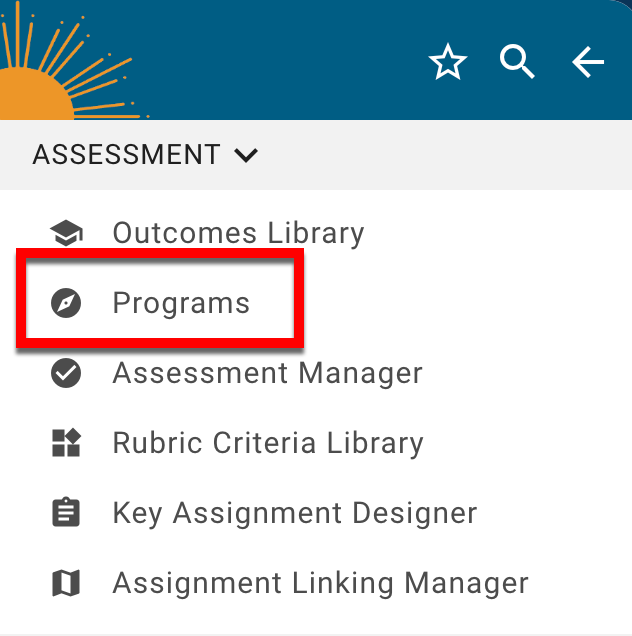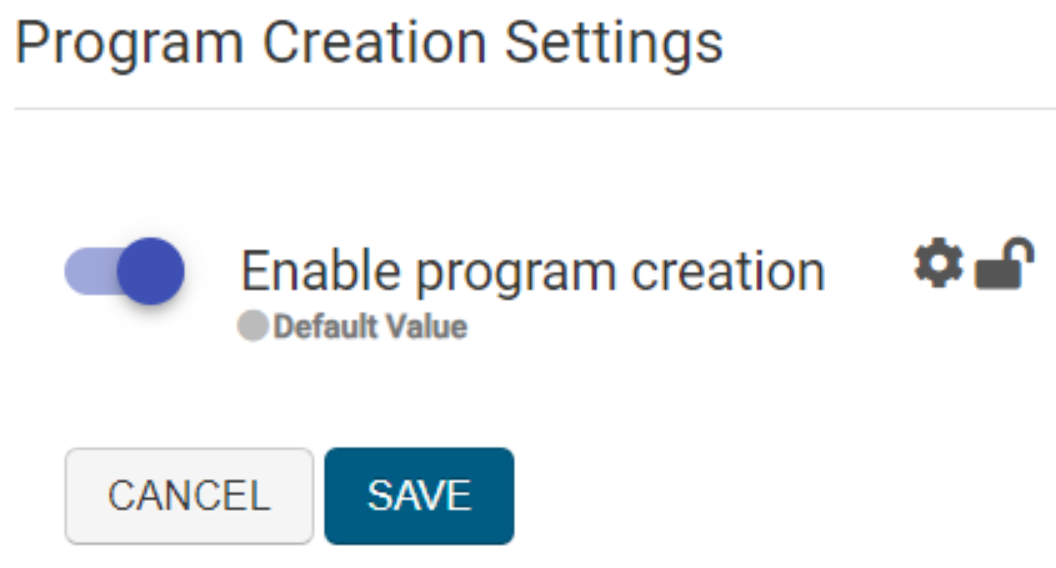
The Curriculum Mapping feature allows Institutions to develop robust curriculum maps by creating relationships to various outcome frameworks, including institutional outcomes, planning goals, accreditation standards, and skills. This feature enables Institutions to streamline the curriculum mapping process by creating robust relationships that automatically roll up and provide Student achievement data across multiple outcome frameworks. Curriculum Mapping is performed via the Main Menu > Programs; to learn about the Curriculum Mapping feature and its benefits, and for a walkthrough within the platform, check out the Curriculum Mapping video walkthrough!
How can Curriculum Mapping Help?

-
Design and digitize curriculum maps for better visibility into student learning.
-
Seamlessly create one-to-many outcome relationships across internal and external outcome sets through a simple ”drag and drop” process or through a spreadsheet template upload.
-
Map to courses, co-curricular experiences, and Course/Co-Curricular Learning Outcomes (CLOs).
-
Identify gaps, inconsistencies, and opportunities to collect learning outcomes assessment data and inform curriculum changes.
-
Measure once and report out at multiple levels to support curriculum revision, student learning resources, academic quality, planning, and accreditation reporting.
What are the Benefits of Curriculum Mapping?
-
Centralize Programs: Design, manage, and revise academic programs, units, and co-curricular experiences in one location. Set permissions for edit and read-only access.
-
Single Source of Truth for Outcomes: Maintain an Institutional-Wide outcomes library in one place, providing transparency and version control for all accreditation standards, competency frameworks, program and institutional outcomes, planning goals, and course learning outcomes.
-
Consistency through Proficiency Scales: Define program proficiency based on expected student performance across development levels and overall proficiency for program completion. This provides consistency in how performance is assessed and measured.
-
Build a Continuous Improvement Foundation: Once created, curriculum maps are the foundation for assessment and continuous improvement processes conducted inside the platform. Institutions can maintain and revise curriculum maps based on realized student learning needs.
-
Streamline Collection and Reporting: Through robust outcome relationships, Institutions can measure once and report out at multiple levels to support accreditation, strategic planning, and institutional effectiveness needs and report on different versions of a curriculum map to share with internal and external stakeholders.
Getting Started
Considerations
-
Have courses been imported? To support adding educational experiences to a program, Institutions should ensure that their courses have been successfully imported to the platform via the Course Catalog Data File and are in Published status.
-
Should Program Coordinators be permitted to create and revise programs? Institutions can configure program management via Institution Program Settings. When disabled, manual creation and revision of programs will be unavailable; when enabled, Program Coordinators have the ability to create and revise programs via the platform interface.

-
Will Performance Indicators or Program Outcomes be used for Curriculum Mapping? The configuration of this decision can be standardized as a required default for Institutions by locking the configuration at the Organizational Hierarchy level prior to program creation. If a standardized configuration is not needed, the configuration can be set at the Organizational Hierarchy level and left unlocked to be a suggested default for Program Coordinators.
-
Should a standardized Proficiency Scale, Developmental Levels, Performance Goal, or Proficiency Scale Thresholds be used? The configuration of this decision can be standardized as a required default for an Institution by locking the configuration at the Organizational Hierarchy level prior to program creation. If a standardized configuration is not needed, the configuration can be set at the Organizational Hierarchy level and left unlocked to be a suggested default for Program Coordinators.
Curriculum Mapping Process
-
Program Creation: Add a program by navigating to Main Menu > Assessment > Programs.
-
Program Details: Configure program attributes and establish Program Coordinators.
-
Program Settings: Enable assessment, establish the outcome mapping and measurement type, and configure assignment settings. Define the development levels, proficiency scale, performance goal, and assignment proficiency scale thresholds.
-
Outcome Set: Add outcomes sets to create relationships between one or more outcome sets and Program Learning Outcomes (PLOs).
-
Student Outcomes: Create PLOs and establish relationships with Institutions, Colleges, Departments, and Accreditor outcomes. Depending on the outcome mapping and measurement configuration via Program Settings, Institutions can create PLOs and outcome relationships or create performance indicators and outcome relationships.
-
Educational Experiences: Categorize a program's plan of study to support post-assessment reporting capabilities.
-
Mapping: Define a program’s curriculum map. Mapping can be performed by course or outcome; regardless of which method is used, the Mapping by Course and Mapping by Outcome platform pages are interchangeable and will mirror each other.
